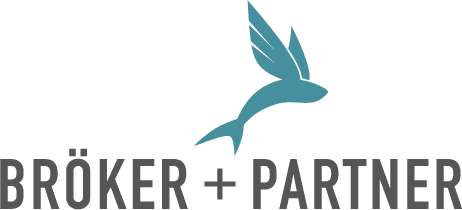Create evaluation, transparency and comparability for all roles
Industry: Wholesale, approx. 17,000 employees, employees affected: 300, area: IT
Project duration: 2 years, consulting services: concept development and change
management, 3 consultants

The rapidly growing IT department of an international wholesale company was faced with the challenge of recruiting sufficient personnel in terms of quality and quantity in a timely manner while ensuring that no employees were lost. Market-driven compensation and transparency regarding possible career paths and salary development were identified as key success factors. Neither of these had been clear or available up to that point.
In order to achieve the necessary clarity and transparency for existing and future employees, a grading framework needed to be developed and introduced.
Bröker + Partner worked with an internal project team to develop a tailor-made grading framework. This included a clear description of all IT roles at all levels with the associated requirements. In addition to management levels, specialist levels were also defined with their own career paths. A salary survey was purchased as a benchmark and integrated into the framework.
Bröker + Partner also managed the implementation and the necessary transformation. Intensive communication and training for all managers and employees ensured a smooth introduction.
The grading framework enabled management to assess the marketability of current salaries and respond accordingly. For employees, the possible career paths and salary development opportunities became transparent. As a result, recruitment success was increased, employee satisfaction was improved and human resources work became significantly more effective and efficient.
START: AS IS
Uncertainty about the marketability of salaries and internal career paths
GOAL: TO BE
The roles in IT are described and the requirements are specified. The levels for managers and specialists are described and the career path is defined. The salary bands for IT are defined and marketability is ensured by benchmarking.
IMPLEMENTATION
Definition of roles in IT and the requirements for role holders. Design and implementation of a grading framework. Holding of information events and training courses for employees and managers.
EVALUATION / RESULTS
The grading framework was successfully introduced, and the roles and requirements were described. Career paths for managers and specialists were described and communicated within the company. Managers and employees accepted the grading framework as a very positive innovation. Transparency regarding one's own position and possible career paths was established and also received very positive feedback. The framework has proven to be a facilitator and success factor for recruiting.
LESSONS LEARNED
A major challenge was to match the roles actually performed with the target roles of the framework and to change current roles in the process. A success factor for the entire project was that a lot of time was taken for the introduction and transformation





